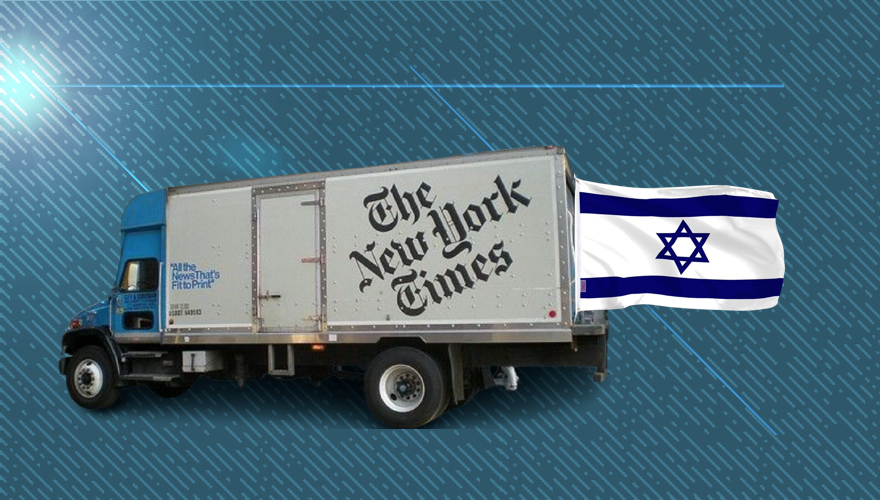Journalists at The New York Times were reportedly instructed to "avoid" certain language when discussing the Israel-Gaza conflict, according to an internal memo.
The memo, obtained by The Intercept, reportedly instructed the outlet's journalists to avoid the use of terms like "genocide," "ethnic cleansing," and "occupied territory" when covering the military conflict in the Middle East. Reporters were also reportedly instructed to avoid explicit references to Palestine "except in very rare cases," and were further instructed to avoid referring to "refugee camps" when discussing the Gaza Strip. However, Palestinians in the region are recognized by the United Nations as "refugees."
The memo was penned by the outlet's standards editor Susan Wessling, international editor Philip Pan, and other deputy associates in order to offer "guidance about some terms and other issues" reporters have tackled since the conflict began last October.
“I think it’s the kind of thing that looks professional and logical if you have no knowledge of the historical context of the Palestinian-Israeli conflict,” said one source from The New York Times who spoke on the condition of anonymity. "But if you do know, it will be clear how apologetic it is to Israel.”
The memo was first distributed to associates of The New York Times in November and has continuously been updated in the following months.
“The nature of the conflict has led to inflammatory language and incendiary accusations on all sides," the internal memo reads. "We should be very cautious about using such language, even in quotations. Our goal is to provide clear, accurate information, and heated language can often obscure rather than clarify the fact."
“Words like ‘slaughter,’ ‘massacre’ and ‘carnage’ often convey more emotion than information. Think hard before using them in our own voice,” the memo continued. “Can we articulate why we are applying those words to one particular situation and not another? As always, we should focus on clarity and precision — describe what happened rather than using a label.”
The memo notes the use of "terrorism" and "terrorist" are appropriate when describing the Oct. 7. attack on Israel, citing "deliberate targeting of civilians in killings and kidnappings."
“We should not shy away from that description of the events or the attackers, particularly when we provide context and explanation," the memo continued, though instructed reporters to avoid other terms. “Avoid ‘fighters’ when referring to the Oct. 7 attack; the term suggests a conventional war rather than a deliberate attack on civilians. And be cautious in using ‘militants,’ which is interpreted in different ways and may be confusing to readers.”
Times spokesperson Charlie Stadtlander said the guidelines were issued to "ensure accuracy, consistency, and nuance" in how the outlet covers news.
“Across all our reporting, including complex events like this, we take care to ensure our language choices are sensitive, current and clear to our audiences," Stadtlander added.
Internal tensions arose at the outlet as some reporters claimed The New York Times began framing their stories to favor Israel. Pan attempted to quell internal conflict at the outlet after a series of reporters took to a WhatsApp group to express their frustration.
“We need to do a better job communicating with each other as we report the news, so our discussions are more productive and our disagreements less distracting,” Pan wrote on WhatsApp in late November, according to The Intercept. “At its best, this channel has been a quick, transparent and productive space to collaborate on a complex, fast-moving story. At its worst, it’s a tense forum where the questions and comments can feel accusatory and personal.”
“Do not use this channel for raising concerns about coverage," Pan instructed reporters.
Another anonymous source within the outlet noted style guidelines were common practice within media companies, though said The New York Times' memo was egregious in its favorability to Israel.
"There are unique standards applied to violence perpetrated by Israel. Readers have noticed and I understand their frustration," the source said.
Other associates of the outlet have argued aversion to certain terms "obscures the reality" of the Israel-Hamas conflict and fails to acknowledge conflicts in the region prior to the Oct. 7 attack. “You are basically taking the occupation out of the coverage, which is the actual core of the conflict,” said an anonymous source. “It’s like, ‘Oh let’s not say occupation because it might make it look like we’re justifying a terrorist attack.’”

